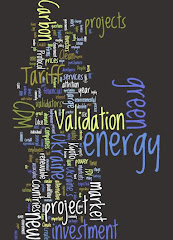
Green Tariffs are an important factor in alternative energy investment decision making. Nations seeking to incentivize alternative energy investment, such as European Union countries and Ukraine also, establish higher electricity sales prices (and therefore revenues) for alternative energy power producers compared to traditional fossil fuel based power producers.
From a project investor's point of view, an alternative energy business plan must be financially attractive and typically must "stand on its own two feet" aside from any carbon credit component. Carbon credits are expected and documented, but an investor does not typically invest into an energy power project to collect carbon credits alone.
Green Tariffs increase the sales revenues from alternative energy power projects; likewise, they reduce the payback period and investment risk for such projects in emerging market economies. Alternative energy projects that otherwise would be regarded as difficult or risky for technology, cost or country risk reasons can experience refreshed interest and activity levels due to corresponding Green Tariff revenues. It is clear, for instance, that Ukraine's new Green Tariff has sustained foreign investors' interest in its clean and renewable energy markets during the present financial downturn.
Countries develop Green Tariffs on an independent basis. In Ukraine, the Green Tariff is set by the National Electricity Regulatory Commission (NERC). It covers alternative energy production facilities such as wind power plants, hydropower, biomass, biogas, and other methane utilization projects (except blast-furnace and coking gases). There is no present capacity cap on Ukraine's Green Tariff except for hydropower plants, where an eligible facility cannot exceed 10 MW in capacity.
Carbon credits and Green Tariffs together create an excellent incentive stew for new alternative energy project finance. In countries like Ukraine, where the Green Tariff roughly doubles historic project revenues and a streamlined Track 1 JI approval process eliminates international bureaucracy, investment conditions have never been better.
Please feel free to contact the Foundation for the Development of Environmental and Energy Markets to discuss specific questions or opportunities with regard to European Green Tariff structures and alternative energy markets. For Ukraine's Green Tariff rate schedule, please see my prior post entitled "Ukraine's New 2009 Green Tariff Rates" and refer to the end table.
Cheers
Jon




